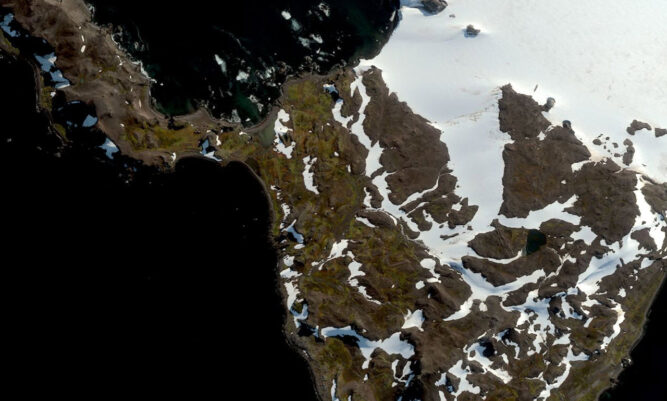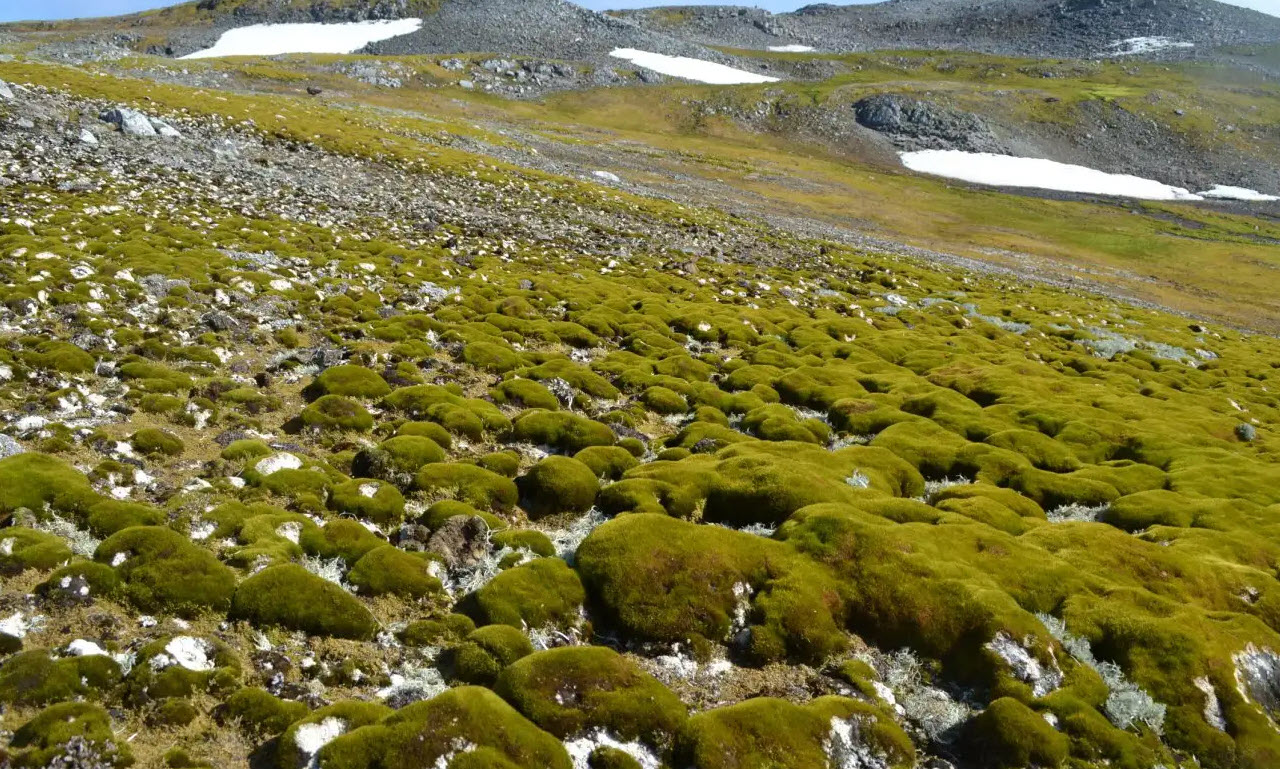
One of the more interesting areas on the planet Earth is Antarctica. It is a part of the world that is largely unexplored, mostly because it’s covered with a thick sheet of ice.
People would expect to see a lot of snow and ice when they visit Antarctica but recently, satellite footage has been showing something different. When they looked at the images, they saw that the continent was turning green and now scientists are trying to figure out what is going on.

The Antarctic Peninsula is on a warming trend that is happening so ‘dramatically’ that scientists are not looking at the future with a positive attitude. They feel that it may have some negative consequences for the continent and perhaps for others throughout the world.
The British Antarctic Survey, along with researchers from the universities of Hertfordshire and Exter have looked into the issue. What they found is that the continent of Antarctica is growing vegetation rapidly because it is warming up faster than other areas on average.
Satellite data showed that extreme heat events were taking place and are happening on a more frequent basis. Compared with 40 years ago, the amount of vegetation on the continent is 10 times larger.
This was checked back in 1986, when the vegetation was only spreading out over approximately 1 km². The last time it was recorded in 2021, it was at 12 km².
The growth that was shown on satellite imagery along with the plant life that has increased on the peninsula and is rapidly accelerating has caused scientists to have concern. They published the findings in the Nature Geoscience journal, including a warning about the region.

A researcher from the University of Exeter, Dr. Thomas Roland said: “The sensitivity of the Antarctic Peninsula’s vegetation to climate change is now clear and, under future anthropogenic warming, we could see fundamental changes to the biology and landscape of this iconic and vulnerable region.
“Our findings raise serious concerns about the environmental future of the Antarctic Peninsula, and of the continent as a whole.
“In order to protect Antarctica, we must understand these changes and identify precisely what is causing them.”
Fears are escalating after native plants are spreading two additional areas and the Antarctic Peninsula is now home to new species of plant life. These invasive species could spell problems for the peninsula. It is thought that they may be coming from ecotourism and scientists.
At this point, additional studies are said to be ‘urgently’ needed to determine why these things are occurring. It could help scientists to determine what would happen in the future as additional plants populate the area and if climate change continues to damage the environment.
A researcher from the University of Hertfordshire, Dr. Olly Bartlett said: “As these ecosystems become more established – and the climate continues to warm – it’s likely that the extent of greening will increase.
“Soil in Antarctica is mostly poor or non-existent, but this increase in plant life will add organic matter, and facilitate soil formation – potentially paving the way for other plants to grow.
“This raises the risk of non-native and invasive species arriving, possibly carried by eco-tourists, scientists or other visitors to the continent.”
To add to it, Dr. Roland said: “The plants we find on the Antarctic Peninsula – mostly mosses – grow in perhaps the harshest conditions on Earth.
“The landscape is still almost entirely dominated by snow, ice and rock, with only a tiny fraction colonised by plant life.
“But that tiny fraction has grown dramatically – showing that even this vast and isolated ‘wilderness’ is being affected by anthropogenic climate change.”
We will have to keep a close eye on this one.
